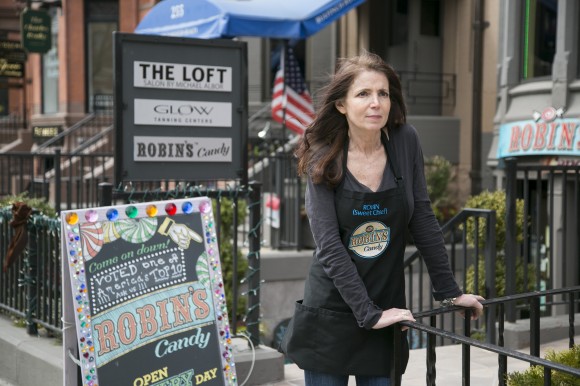For landlord Peter Zagorianakos, terrorism insurance wasn’t a necessity until the bombs went off last April at the Boston Marathon and revealed a frightening pattern.
Two buildings he owns stand within a half-mile (0.8 kilometer) of the race’s finish line on Boston’s Boylston Street where two explosions killed three and injured 264. Another is within blocks of the Cambridge, Massachusetts, home of the two brothers suspected of plotting the attack.
He also owns an industrial property in Watertown, about 100 feet (30 meters) from the boat where the younger suspect, Dzhokhar Tsarnaev, was found hiding after a police manhunt.
“They circled us,” Zagorianakos said of the suspects. It didn’t take long for the 50-year-old commercial developer, like thousands of others, to pony up for the extra protection.
Terrorism insurance, designed for large businesses and corporations, suddenly seemed wise for more midsized and smaller firms. Broken windows and a 10-day closure at restaurants and mom-and-pop businesses spurred owners of similar operations across the U.S. to think, “hey, this could happen to me,” said Philip Edmundson, co-founder of William Gallagher Associates, a Boston-based national brokerage firm.
New Calculus
Eighty percent of Edmundson’s 5,000 small and midsized customers now have terrorism coverage compared with 50 percent before the blasts. Next week, Marsh & McLennan Cos. will report an increase in sales to midsized and large companies. Tarique Nageer, a senior vice president for the insurance broker, attributes part of the gain to businesses responding to Boston.
“The Marathon attack changed the calculus,” Edmundson said. “It taught us terrorism is a risk to businesses of every scale and size.”
Before 2001, damage from terrorism was typically covered in policies without additional charges because the possibility of an attack seemed remote. The insurance industry paid $31.6 billion after that year’s Sept. 11 attacks, and providers began excluding acts of terror from commercial contracts. Coverage became expensive if it was offered at all, according to a March report from the Congressional Research Service.
In the next 14 months, $15.5 billion of real estate projects in 17 states were stalled or canceled as lenders shunned assets that lacked terrorism coverage, according to a Real Estate Roundtable survey. Enter the federal government and the Terrorism Risk Insurance Act, which provides a U.S. backstop for insurers after a major attack.
Temporary Fix
TRIA, enacted by Congress in 2002 as a temporary fix, was reauthorized in 2005 and 2007. Last week, a bipartisan group of senators agreed after months of debate on a third renewal, a seven-year extension. A House subcommittee is expected to draw up its own version in May.
“I don’t like TRIA,” Massachusetts Representative Michael Capuano said in an interview. The eight-term Democrat’s district includes the Marathon bombings site, and he was a House co- sponsor of TRIA’s latest renewal. “I just don’t know any other way around it.”
Absent the government commitment, Capuano said, the cost of coverage would skyrocket and the U.S. economy would falter. Fellow Massachusetts Democrat, Senator Elizabeth Warren, labeled TRIA a “giveaway” to insurers at a February Senate hearing, pointing out that providers pay no up-front fees for the federal backing that keeps their prices attractive.
‘Free Lunch’
In Europe, countries facing terrorist threats have created government-backed reinsurance bodies that charge insurers a premium. The U.S. should do the same, said Erwann Michel-Kerjan, a professor who studies risk at the University of Pennsylvania’s Wharton School.
“That way we stop having the debate about the insurance industry getting a free lunch,” he said.
Robert Hartwig, president of the Insurance Information Institute, an industry group, said the program counters a key goal of terrorists, which is to disrupt commerce. TRIA also establishes limits on what the government will pay, he said.
“There’s no question the program is clearly part of the national economic security of the country,” he said. “What the terrorists want to do is debilitate the U.S. economy.”
Under TRIA, insurers cover losses up to $100 million for a single attack. U.S. reimbursement begins after that threshold is met and individual companies pay a deductible of 20 percent of the previous year’s commercial insurance premiums.
The federal annual liability is capped at $100 billion and the government is required to recoup losses of as much as $27.5 billion through a surcharge on commercial policies.
Property Coverage
The average cost that an insurance buyer pays for property terrorism coverage ranges from $19 to $49 per million of insured value, depending on the size of the company, according to a 2013 report from Marsh & McLennan, the largest insurance broker by market value. Companies in the U.S. Northeast pay the highest rates. The expense generally represents 3 to 5 percent of a company’s property insurance bill, according to the report.
Zagorianakos, the Boston landlord, pays about 1 percent more to add terror protection for existing buildings and 2.8 percent for projects in development, according to his agent, Michael Regan of Regan Cleary Insurance in Boston. Regan said most clients turned down the coverage before Boston. “Now everybody is saying, ‘I think I need it,'” he said.
For some of those in Boston who had purchased coverage before the Marathon bombings, seeking reimbursement was an exercise in confusion. One hundred and sixty companies near the explosions submitted claims for property damage or business losses. Just 14 percent had coverage for terrorism, according to the state’s insurance regulator.
Candy Shop
As it turns out, they didn’t need it. The Boston attack was never officially labeled by the U.S. Treasury Department as an act of terrorism, even though President Barack Obama described it as such in a press briefing.
Under the law, an incident can be defined as an act of terror for insurance purposes only if it causes at least $5 million in total covered losses. Payout on $2.5 million in claims filed after the attack reached $1.9 million near the end of January, according to Massachusetts Division of Insurance data.
The fact that most businesses didn’t have the terrorism coverage turns out to have worked for them. If claims were high enough to trigger payments the law, businesses without the extra coverage would have lost out.
Recording Studio
Robin Helfand, 54, who had the terrorism protection, wasn’t able to benefit from it. The owner of a high-end candy shop on Boston’s Newbury Street, a block over from the blasts, she had lived through Sept. 11 in New York. Moving to Boston and opening her store, Helfand figured the insurance would give her peace of mind. She said she had to throw away merchandise when streets were closed by the shop for 10 days, and it took months for business to return to normal.
Perry Geyer, owner of Cybersound recording studio on Newbury Street, said he had $9,000 in losses and was so frustrated by the denial of his claim that he canceled his terrorism coverage.
Even though terrorism insurance didn’t help Helfand or Geyer, the lawyer who worked with them said he’d still advise business owners to buy the coverage.
“It’s not that expensive and it might make a difference,” said Jon C. Cowen of Posternak, Blankstein & Lund LLP.
Tightened security and global surveillance make large-scale attacks less likely, said Gordon Woo, catastrophist for Newark, California-based Risk Management Solutions Inc. And while plots involving a lone wolf, or a pair like the Tsarnaev brothers accused in Boston, have the best chance of succeeding, they are also unlikely to cause large insurance payouts, he said.
Meg Mainzer Cohen, of the Back Bay Association, a business support group, said her members were confused about whether they had adequate protection.
“The lesson from Boston bombing is you need to sit down with an informed carrier and work out whether you’re covered,” she said.
–With assistance from Tom Moroney in Boston, Erik Larson in New York and James Rowley in Washington.
Topics Catastrophe Mergers & Acquisitions USA Property Massachusetts
Was this article valuable?
Here are more articles you may enjoy.



 Foundation Firmed: AM Best Switches View of US Homeowners Insurers to Stable
Foundation Firmed: AM Best Switches View of US Homeowners Insurers to Stable  Acrisure CEO Greg Williams Makes $400M Commitment to Michigan State University
Acrisure CEO Greg Williams Makes $400M Commitment to Michigan State University  Florida, East Coast to See Big Insured Losses From More Cat 5 Storms, Researchers Say
Florida, East Coast to See Big Insured Losses From More Cat 5 Storms, Researchers Say  State Farm Sued Over Policies Backed by Distressed Insurer PHL
State Farm Sued Over Policies Backed by Distressed Insurer PHL 

